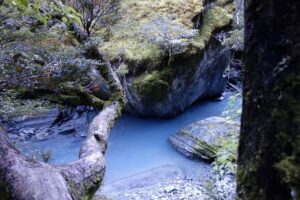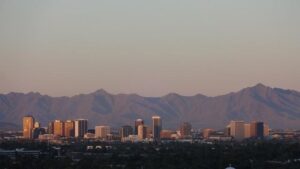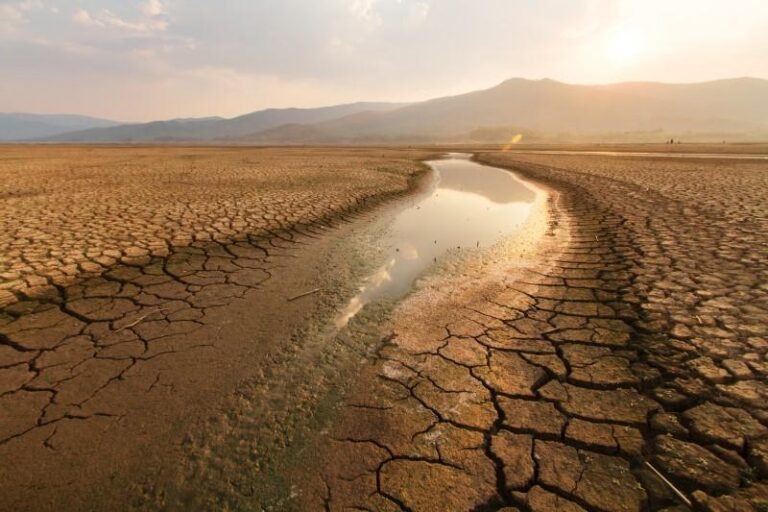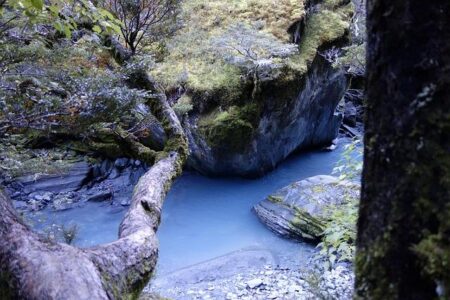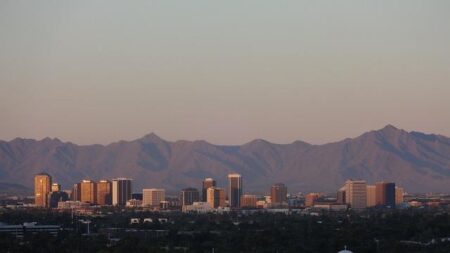Phoenix is on the brink of setting a new record for its longest dry spell, as worsening drought conditions grip the region. With rainfall levels plummeting and reservoirs reaching critically low levels, the city faces increasing challenges in managing water resources amid one of the most severe droughts in recent history. This developing situation underscores growing concerns about the sustainability of water supplies in the American Southwest.
Phoenix faces historic dry streak amid escalating drought severity
Phoenix is currently enduring one of the longest dry spells in its recorded history, a phenomenon that experts warn is symptomatic of an escalating regional drought crisis. With rainfall levels plummeting and reservoir capacities shrinking, communities across the Valley are bracing for significant water scarcity issues. Meteorologists highlight data showing a steady decline in precipitation over the past decade, compounded by rising temperatures that accelerate evaporation rates, creating a perfect storm for drought conditions.
Authorities have implemented stringent water conservation measures and urge residents to adopt sustainable habits. Key impacts include:
- Sharp decline in groundwater levels affecting agriculture
- Increased wildfire risks due to dry vegetation
- Heightened urban heat island effect worsening the living environment
- Stress on local ecosystems and endangered wildlife
| Metric | Current Year | 10-Year Average | Historic Low |
|---|---|---|---|
| Rainfall (inches) | 3.2 | 7.5 | 2.9 (2016) |
| Reservoir Levels (%) | 42 | 68 | 35 (2014) |
| Days Without Rain | 153 | 90 | 160 (1990) |
Impact of prolonged drought on local agriculture and water resources
The extended dry spell gripping the Phoenix area has profoundly disrupted local agricultural activities, leading to severe crop failures and heightened economic strain for farmers. With soil moisture levels plummeting, farmers report dwindling yields of staple crops, pushing some to abandon fields altogether. The scarcity of water supplies for irrigation has forced the adoption of more water-efficient practices, yet these measures struggle to compensate for this year’s deficits.
Local water resources are under immense pressure as reservoirs and aquifers approach critical lows. Authorities warn that the ongoing drought could lead to stricter water rationing policies. Key impacts include:
- Decreased reservoir levels hinder municipal and agricultural water availability.
- Groundwater depletion accelerates, threatening long-term sustainability.
- Increased competition between urban and rural water users.
- Heightened wildfire risk due to dry vegetation.
| Resource | Current Status | Change from Last Year |
|---|---|---|
| Reservoir Capacity | 37% | -18% |
| Groundwater Levels | Critical | -12 ft |
| Irrigated Farmland | Reduced | -25% |
Community efforts and policy measures to mitigate water scarcity
Local communities in Phoenix have mobilized rapidly to confront the escalating water crisis. Grassroots initiatives emphasize water conservation through education programs and neighborhood-level water audits, encouraging residents to reduce household consumption. Collaborative efforts include:
- Installation of water-efficient appliances subsidized by city grants
- Rainwater harvesting campaigns promoting the use of collected water for irrigation
- Community workshops providing resources on sustainable landscaping techniques
On the policy front, state officials have enacted stringent water use regulations targeting both residential and commercial sectors. Legislation focuses on bolstering infrastructure resilience and incentivizing innovation through financial mechanisms. The table below highlights key policy measures recently implemented:
| Measure | Description | Impact |
|---|---|---|
| Mandatory Water Audits | Annual inspections for large water users | 15% reduction target |
| Usage-Based Pricing | Tiered billing to discourage excess consumption | Encourages conservation |
| Infrastructure Grants | Funds allocated to upgrade pipelines and reservoirs | Reduced leaks, better storage |
Experts urge sustainable practices to prepare for future climate challenges
Climate specialists emphasize that escalating drought conditions demand an urgent shift towards resource-efficient methods to mitigate environmental impact. The worsening aridity in Phoenix—approaching historic dry spell records—underscores the critical need for communities to adopt water conservation and sustainable land management practices. Crucial measures include:
- Implementing advanced irrigation technologies to optimize water use in agriculture
- Enhancing urban green spaces that support local ecosystems and reduce heat islands
- Promoting rainwater harvesting to supplement municipal water supplies
Experts also highlight the importance of multi-sector collaboration to build climate resilience. Data-driven policies and public awareness campaigns are necessary to support drought preparedness strategies that reduce vulnerability while safeguarding livelihoods. The table below summarizes key sustainable strategies recommended by climate researchers:
| Strategy | Benefits | Implementation Area |
|---|---|---|
| Smart Irrigation Systems | Reduces water wastage by up to 40% | Agricultural zones |
| Urban Reforestation | Improves air quality and decreases heat | City parks & residential areas |
| Rainwater Harvesting | Augments local water supply sustainably | Residential & commercial buildings |
To Wrap It Up
As Phoenix approaches a record-breaking dry spell amid worsening drought conditions, concerns continue to mount over the long-term impacts on water supplies, agriculture, and the region’s ecosystem. Experts warn that without significant changes in water management and conservation efforts, the city—and the broader Southwest—may face increasingly severe challenges in the years ahead. Policymakers and residents alike are urged to prepare for a future defined by scarcity, as climate patterns contribute to one of the most persistent dry periods in recent history.

